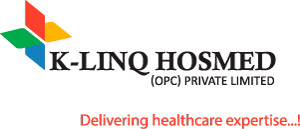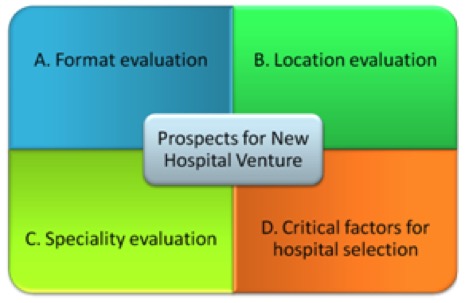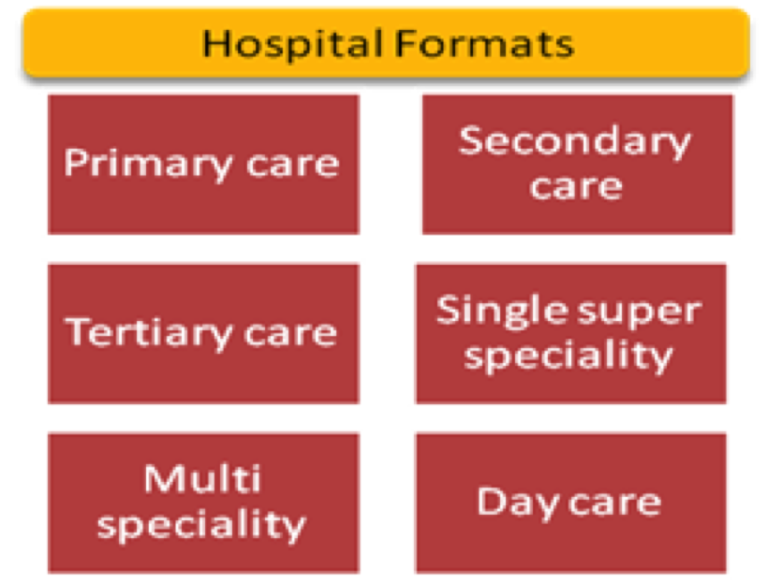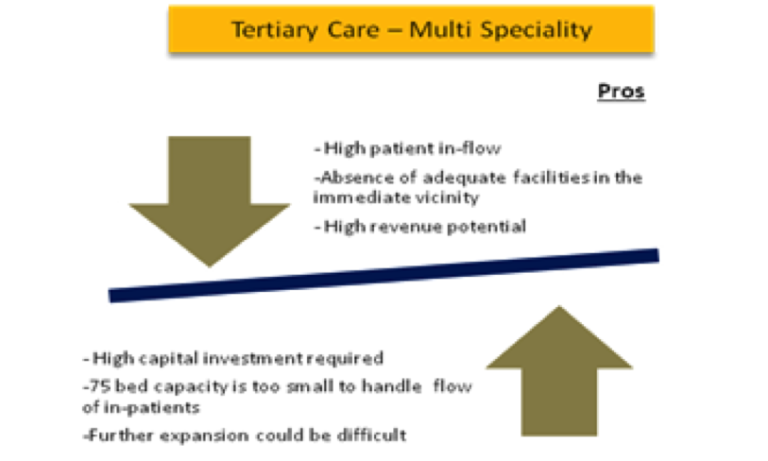
We provide services in setting up health care facilities across the globe. Right from identifying the geography of the land to finalizing the opening date, K-Linq helps an establishment in everything. We believe in flawless execution of our strategy and ensure that we design every detail in conjunction with our client’s needs and that the execution is perfect. We specialize in business strategy planning, hospital planning and design, medical equipment planning and procurement, human resource advisory, information technology, hospital commissioning, human resource planning, fire safety management, disaster management preparation and project management.
Feasibility study of a hospital project
Overview of the 5 Phases
(1) The first phase starts with planning for the project by doing a market study and financial feasibility study. Afterward, you should have the data you need to decide whether you want to move forward with the project.
(2) The Second phase is the pre-planning stage. This is when you conduct on-site visits, meet with the bankers and find the answers to questions that may come up about your project.
(3) The third phase is when financing is settled, the building is designed, and construction begins.
(4) At the fourth phase, it’s time to begin operations planning. This includes starting recruitment, defining policies, and obtaining licenses and accreditation.
(5) Finally, your implementation of a hospital project is complete, but work still needs to be done. The fifth phase involves the ongoing evaluation of hospital operations.
Phase 1 – Market needs assessment and financial feasibility study
A market assessment begins with a thorough review of market demand (Demand Analysis). Specifically, the market analysis includes researching aspects of the expected patient population: patient demographics, health plan/insurance coverage, diagnoses, and their expected treatments. Also, it’s helpful to look at your competitors and the value of their business to the community.
To conduct a financial feasibility study of a hospital project, you’ll need to develop a financial profile of the project from the pre-opening phase and through the next three years. The study should include your financial pro forma and a thorough market analysis. Particularly, the study should provide you with critical data such as:
There isn’t a big loss of time or money in this first stage if you decide to end the project. Therefore, it’s helpful to gather everything you need to be as confident as possible your plan will be a success.
Phase 2 – Pre-planning
Your market analysis and financial feasibility study were favourable. That means it’s time for the pre-planning phase. Here you’ll gather the details you need before beginning the actual design and construction.
This phase includes:
A patient’s cultural background can influence their health beliefs and behaviour.
During the pre-planning phase, don’t neglect to study the cultural aspects of the community that could affect service. Indeed, a patient’s cultural background can influence their health beliefs and behaviour. Thus, knowing the multicultural society that your facility will provide for is one way to offer value to your patients.
Part of the pre-planning process is getting approval for your building. Local and state governments have various requirements for healthcare facilities. This step can seem overwhelming unless you have someone who knows local and state codes to guide you through the process.
Phase 3 – Design and construction
Finally, in phase three, you’re ready to begin the physical construction of your building.
This is when architectural plans are finalized, bids requested and evaluated, permits issued, and contractors hired. These professionals will complete the site survey, interior plans, and required construction documents. You’ll also begin the plans to purchase furniture, fixtures, and required medical equipment, and you must have your construction financing plan in place.
Phase 4 – Operations planning
A long time (!) before your building is complete comes to the details of operating a hospital, like:
Phase 5 – Post-opening evaluation and follow-up
A successful development doesn’t end with phase four. Once your hospital is up and running, you need to monitor the ongoing operations through:
Managing ongoing operations is helpful to determine whether your initial criteria for the project were met. Moreover, getting input from patients and staff will give you valuable insight.
Feasibility Study of a Hospital Project – How to get started
A successful feasibility study of a hospital project must be well designed and efficient with the safety of the users in mind. It all begins with the market demand and financial feasibility study. Hopefully, this brief outline will give you a good idea of the many steps that go into designing and developing a large-scale or micro-scale healthcare facility. Let us know if you like to talk!
Market Survey and Feasibility Study for setting up a Healthcare Facility
Introduction
A Hospital Feasibility Study is the best way to find out the sources of patient flow to the Hospital. The Feasibility Study comprises both a Market and Financial Analysis of the Project and is an essential aspect to be considered either while establishing a new hospital or a new facility in an existing hospital or expanding the existing hospital.
Objective of carrying out a Market Feasibility Study for a Healthcare Facility

Why and How Hospital Feasibility Study Done?
Carrying out a Market Feasibility Study helps
Methodology & Approach to a typical Hospital Feasibility Study

